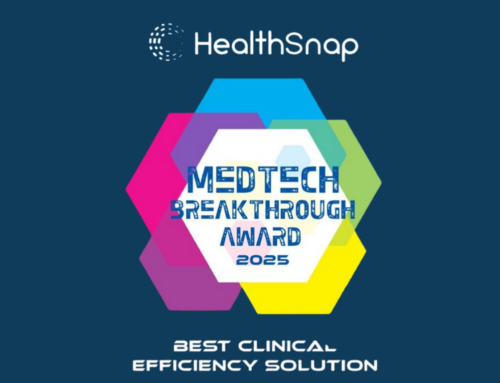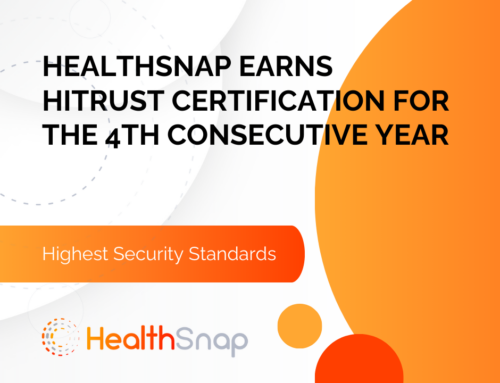The Centers for Medicare and Medicaid Services (CMS) has recently unveiled the Final Physician Fee Schedule (PFS) for 2024, bringing forth pivotal changes that impact Federally Qualified Health Centers (FQHCs) and Rural Health Clinics (RHCs). Among the notable updates is the provision allowing FQHCs and RHCs to bill for Remote Patient Monitoring (RPM) and Remote Therapeutic Monitoring (RTM). This groundbreaking development signifies a paradigm shift in how these healthcare entities can approach patient care and reimbursement.
Billing Changes and Expansion Under HCPCS Code G0511
The cornerstone of the 2024 Final Rule (Medicare Physician Fee Schedule) for FQHCs and RHCs is the introduction of billing capabilities for RPM and RTM services. This is made possible through the utilization of the general management code HCPCS G0511. Previously encompassing services such as Chronic Care Management (CCM) and behavioral health integration, G0511 has now been expanded to include RPM and RTM. This expansion recognizes the unique components of remote monitoring services and reflects the additional resources required.
Reimbursement Adjustments and Frequency
While the Final Rule introduces new billing possibilities, it also comes with adjustments in reimbursement rates. CMS has implemented a revised methodology for calculating the reimbursement amount for G0511. Despite a reduction in the reimbursement rate from $77.94 in 2023 to $72.98 in 2024, CMS clarifies that G0511 can be billed multiple times for the same patient per month for all subcategory codes. This addresses concerns that the code might not adequately account for the resources required to provide distinct services like Chronic Care Management and Remote Patient Monitoring.

Implications for FQHCs and RHCs
The Final Rule empowers FQHCs and RHCs to take a more holistic approach to patient care. No longer constrained to choosing between near real-time monitoring and long-term management of chronic conditions, a healthcare provider can now seamlessly integrate remote monitoring services into their care offerings. This comprehensive approach allows for a more nuanced and patient-centric healthcare delivery model.
Financial Impact and Sustainability
For providers relying on grants to fund Remote Patient Monitoring (RPM) programs, the new reimbursement model offers a sustainable means to continue these initiatives. The expanded billing opportunities provide a potential financial windfall, with the ability for reimbursements of over $300 per patient per month through various billing codes for Chronic Care Management (CCM), Remote Patient Monitoring (RPM), and Behavioral Health Integration (BHI). For providers who may not have been able to afford Remote Patient Monitoring before, this presents an exciting opportunity to expand services and potentially return substantial revenue back to the practice – up to $440,000 for every 500 patients enrolled in an Remote Patient Monitoring program.
Patient-Centric Benefits
The implementation of Remote Patient Monitoring allows convenient monitoring of patients’ vital signs from the comfort of their homes. This not only improves patient experience but also enables timely interventions to potentially prevent hospitalization and emergency room visits. Monitoring vital signs has been shown to enhance health outcomes, including better control of blood pressure and A1c levels. Furthermore, the expanded coverage also increases patients’ access to behavioral health services, potentially improving the management of other prevalent chronic conditions like depression, anxiety, and substance use.
The 2024 Medicare Physician Fee Schedule (MPFS) Final Rule: A Key Milestone
The 2024 MPFS Final Rule marks a significant milestone for Federally Qualified Health Centers (FQHCs) and Rural Health Clinics (RHCs), offering a transformative approach to patient care and reimbursement. As providers navigate these changes, it’s crucial to stay informed about state Medicaid policies, as many are expected to align with these CMS updates. CMS also emphasizes its commitment to considering operational suggestions for future rulemaking, indicating an ongoing effort to refine and improve the implementation of remote monitoring services.
The 2024 Final Rule opens up new possibilities for FQHCs and RHCs, fostering a patient-centric, comprehensive, and financially sustainable approach to healthcare delivery. As these changes take effect, healthcare organizations have the opportunity to enhance the quality of care, expand services, and contribute to the ongoing evolution of the healthcare industry.
Role of FQHCs and RHCs in Improving Access to Healthcare
Access to healthcare is a fundamental right that remains elusive for many individuals, particularly those in underserved communities. Federally Qualified Health Centers and Rural Health Clinics play a vital role in bridging this gap, serving as important players in the effort to improve access to essential healthcare services. Let us look at the important role of FQHCs and RHCs in ensuring that everyone, regardless of socio-economic factors, has access to quality and affordable healthcare.
Geographical Reach and Serving Underserved Areas
FQHCs and RHCs are strategically positioned to address healthcare disparities, especially in rural and underserved urban areas. Their presence in these communities ensure that individuals who may otherwise face barriers, such as transportation challenges or a lack of nearby healthcare facilities, can access essential medical services. By establishing clinics in these areas, FQHCs and RHCs bring healthcare closer to those who need it most.
Comprehensive and Culturally Competent Care
One of the defining features of FQHCs and RHCs is their commitment to providing comprehensive and culturally competent care. These centers are often embedded within the communities they serve, allowing them to understand and address the unique healthcare needs of diverse populations. This cultural sensitivity fosters trust between patients and healthcare providers, encouraging individuals to seek timely medical attention and preventive care.
Sliding Fee Scale and Affordable Services
FQHCs and RHCs operate under a sliding fee scale, ensuring that healthcare services remain affordable for individuals with varying income levels. This financial flexibility removes a significant barrier to healthcare access, particularly for those who are uninsured or underinsured. The ability to pay based on income (with support from health center program grants) helps prevent financial constraints from hindering individuals’ ability to seek necessary medical care.
Focus on Preventive and Primary Care
Prevention lies at the heart of effective healthcare, and FQHCs and RHCs emphasize preventive and primary care services. By offering regular check-ups, screenings, and health education, these centers contribute to early detection and management of health conditions. This proactive approach not only improves health outcomes but also reduces the burden on emergency services by addressing issues before they escalate.

Collaboration and Holistic Healthcare
FQHCs and RHCs often engage in collaborative efforts with community organizations, local health departments, and other stakeholders. This collaborative approach allows for a more holistic understanding of community health needs and facilitates a coordinated response. By working together, these centers can address social determinants of health, such as housing and nutrition, contributing to overall community well-being.
Focus on Vulnerable Populations
FQHCs and RHCs are instrumental in addressing the healthcare needs of vulnerable populations, including the homeless, migrant workers, and individuals with limited English proficiency. Through targeted outreach programs and specialized services, these centers ensure that everyone, regardless of their background or circumstances, has equitable access to healthcare.
Emergency Preparedness and Response
In times of public health emergencies or natural disasters, FQHCs and RHCs play a crucial role in emergency preparedness and response. Their established presence in communities positions them to provide essential medical services during crises, ensuring that residents receive prompt and effective care when it is needed most.
FQHCs and RHCs are pillars of accessible and equitable healthcare, serving as lifelines for communities that may otherwise face significant challenges in obtaining medical services. Their commitment to affordability, cultural competence, preventive care, and community collaboration makes these centers indispensable in the ongoing efforts to improve access to healthcare for all. As we recognize the vital role of FQHCs and RHCs, it becomes clear that supporting and strengthening these institutions is key to building a healthier, more inclusive society.
The Role of RPM and RTM Programs in Fulfilling Care Delivery Goals of FQHCs and RHCs
In the pursuit of comprehensive and patient-centered care, FQHCs and RHCs are increasingly turning to innovative solutions. Among these, Remote Patient Monitoring and Remote Therapeutic Monitoring stand out as transformative programs that not only bridge geographical gaps but also enhance the quality and accessibility of healthcare services.
Expanded Access to Care
FQHCs and RHCs often serve populations in remote or underserved areas, where access to healthcare services may be limited. Remote Patient Monitoring and Remote Therapeutic Monitoring break down geographical barriers by enabling healthcare providers to remotely monitor patients’ health conditions and therapy progress. This expanded reach ensures that individuals in distant or rural locations have continuous access to vital healthcare resources.
Chronic Disease Management and Intervention
Chronic conditions pose a significant challenge for many FQHC and RHC patients. Remote Patient Monitoring facilitates continuous monitoring of vital signs, while Remote Therapeutic Monitoring enables healthcare providers to remotely oversee therapeutic interventions. Access to near real-time data empowers healthcare teams to intervene promptly in the event of health deterioration or therapy non-compliance, leading to more effective chronic condition management.
Cost-effective and Resource-Efficient Care
FQHCs and RHCs operate with a focus on providing cost-effective care to diverse populations. Remote Patient Monitoring and Remote Therapeutic Monitoring programs contribute to this goal by optimizing resource utilization. Remote monitoring reduces the need for frequent in-person visits, lowering transportation costs for patients and minimizing the strain on healthcare facilities. This efficiency supports the financial sustainability of care delivery in FQHCs and RHCs.
Patient Empowerment and Engagement
Patient engagement is the key to successful healthcare delivery. Virtual Care Management programs, like Remote Patient Monitoring, empower patients by involving them actively in their own care. Patients can monitor their health parameters at home and receive feedback from healthcare providers. This engagement fosters a sense of accountability and encourages patients to adhere to treatment plans, ultimately leading to improved health outcomes.

Personalized Care Plans
RPM and RTM generate a wealth of patient data that can be analyzed to tailor care plans to individual needs. By tracking trends and patterns in health and therapeutic data, healthcare providers can personalize interventions, making care delivery more precise and effective. This data-driven approach enhances the quality of care provided by FQHCs and RHCs.
How Healthcare Providers Can Benefit from the New Physician Fee Schedule When They Implement RPM and RTM Programs
The recent updates in the Physician Fee Schedule (PFS) have opened new avenues for healthcare providers to enhance patient care and financial sustainability, particularly through the implementation of Remote Patient Monitoring and Remote Therapeutic Monitoring programs. Let us look at the various ways healthcare providers can leverage the new fee schedule to optimize reimbursement and improve patient outcomes.
Access to Additional Revenue Streams
The inclusion of RPM and RTM in the Physician Fee Schedule allows healthcare providers to access additional revenue streams beyond traditional in-person services. By implementing these programs, providers can bill for remote monitoring services, contributing to increased overall revenue while expanding their scope of care.
Billing Flexibility and Frequency
The revised fee schedule provides billing flexibility for RPM and RTM services, allowing providers to bill for the same patient multiple times per month. This flexibility addresses concerns about adequately accounting for the resources required to provide distinct services. Providers can now bill for various subcategory codes under the general management code, providing a more nuanced and comprehensive approach to patient care.
Enhanced Chronic Disease Management
RPM and RTM programs are particularly beneficial for managing chronic diseases. Healthcare providers can remotely monitor vital signs, medication adherence, and therapy progress for patients with conditions like diabetes, hypertension, and heart disease. This proactive approach enables timely interventions, reduces hospitalizations, and improves overall chronic condition management.
Financial Sustainability for RPM Programs
For providers relying on grants to fund Remote Patient Monitoring programs, the new reimbursement model offers a sustainable means to continue these initiatives. The inclusion of RPM in the fee schedule provides a clear path for financial support, ensuring the longevity of remote monitoring programs and their positive impact on patient outcomes.
Expanded Services and Patient Reach
The fee schedule’s recognition of RPM and RTM underscores the importance of expanding services beyond traditional face-to-face interactions. Providers can now reach patients in remote or underserved areas, breaking down geographical barriers and ensuring continuous care. This expanded reach aligns with the goal of delivering accessible healthcare to diverse populations.
Data-Driven Decision Making and Quality Improvement
RPM and RTM generate valuable patient data that can be utilized for data-driven decision-making. Healthcare providers can analyze trends, identify areas for improvement, and customize interventions based on individual patient needs. This focus on data-driven care not only enhances the quality of services but also contributes to ongoing quality improvement initiatives.
Patient-Centered Care and Engagement
The implementation of RPM and RTM fosters patient-centered care by actively involving patients in their health management. Patients can actively participate in monitoring their health, receive real-time feedback, and engage in therapeutic activities. This heightened level of patient engagement contributes to improved adherence to treatment plans and overall patient satisfaction.
Opportunity for Program Expansion and Innovation
The new fee schedule creates an exciting opportunity for providers to expand their services and innovate in healthcare delivery. By leveraging the reimbursement opportunities for RPM and RTM, providers can explore new ways to enhance patient care, implement cutting-edge technologies, and stay at the forefront of healthcare innovation.
The updated Physician Fee Schedule provides healthcare providers with a unique opportunity to transform the way they deliver care through the implementation of RPM and RTM programs. By seizing these opportunities, providers can not only improve patient outcomes, expand their services, and contribute to the evolution of patient-centered and technologically advanced healthcare, but also optimize reimbursement as well.

Schedule a Demo of HealthSnap’s Virtual Care Platform Today
Transform your approach to virtual care management with HealthSnap’s industry-leading solution designed to empower people living with chronic conditions anytime, anywhere. Whether you are a provider group, health system, ACO, or FQHC/RHC, HealthSnap offers tailored solutions, seamless EHR integration, and customizable workflows to enhance patient outcomes, reduce utilization, and increase revenue. Elevate your care team’s effectiveness, drive improved patient experiences and outcomes, and make the most of the power of virtual care management.
Discover how HealthSnap can revolutionize your approach to remote care, making a lasting impact on the health and well-being of your patient population. To schedule a demo with a HealthSnap Specialist, call today at 888-780-1872 (Ext. 3) or click here to schedule a free consultation.






